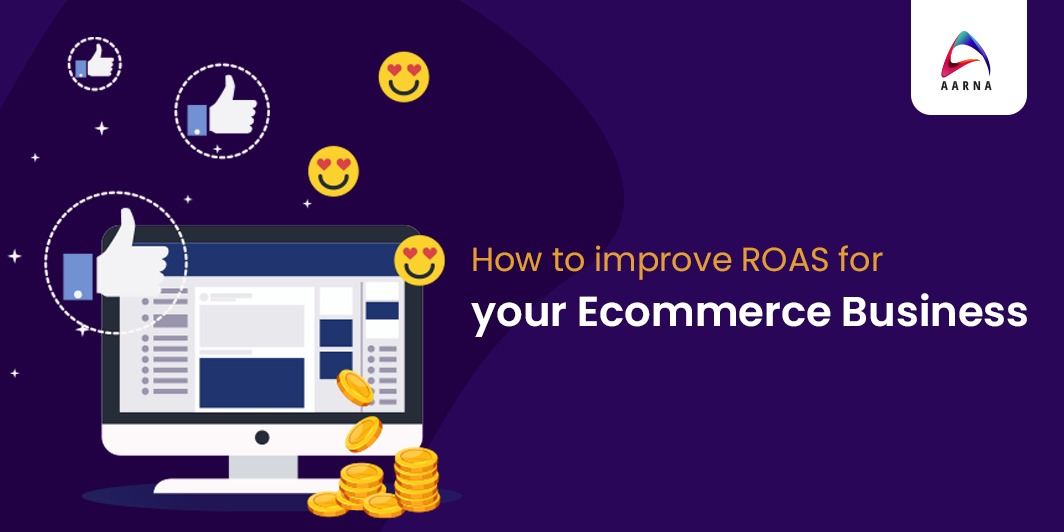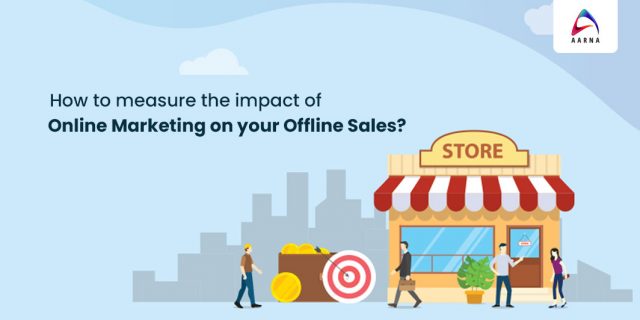
In e-commerce advertising, your success depends upon your return on ad spend (ROAS). Before running paid ads for your e-commerce company, you need to determine a target return on ad spend (ROAS) to quantify what an effective ad campaign appears like for your business. Otherwise, if you introduce an advertising campaign without a predefined success metric in mind, how will you know if it paid? Let’s understand what Ecommerce Marketing Experts say about ROAS.
What is ROAS?
Return on ad spend serves as a way for brands to measure how reliable their advertising is. By comparing your revenue with the money invested in advertising, you can determine the health of your service and the return you receive for your advertising spent.
The more effect your advertising messages have, the more revenue you’ll get for each rupee invested. So the higher your ROAS is, the much better your efficiency.
The ROAS formula can assist brands to find out whether a strategy succeeds. When tracked in time, it can likewise be used to assess whether campaigns are improving or degrading. It can even assist identify the specific tactics that boost your bottom line the most.
How to calculate ROAS
The ROAS formula is fairly straightforward. You merely divide your company’s revenue by the quantity you invested in advertising during a specific amount of time.
ROAS = Total profits/ Total ad invest
If your total sales are worth Rs 1,000 and you spent Rs 200 on advertising, your ROAS would be 5. 1,000/ 200 = 5. So for every rupee, you invested in advertising, you made Rs 5 back.
Your ROAS estimation may be broad or specific, depending upon the data that’s offered to you. You can figure out your brand’s overall ROAS, by comparing your overall earnings with your total advertising spend throughout all channels and campaigns.
You can do a ROAS computation to assess the efficiency of a particular campaign. You might compare the profits of a particular item with the money you spent advertising it. This is something to remember for brand-new launches.
If you utilise trackable digital ads, you can also compare the income produced from each campaign with the cost of running them. Businesses utilising Google Ads must be able to see how much their spending and earnings is across their account. They can quickly calculate the ROAS of each campaign or ad group. This makes it easy to cut out ineffective ads and replicate engaging ones.
Nevertheless, it isn’t constantly easy to determine the ROAS of a single medium. It is challenging to identify exactly just how much revenue the likes of signboards, publication ads or television campaigns create. For this reason, it makes good sense to calculate the total ROAS of your brand before looking at private digital channels.
It is also a good idea to determine the ROAS of an advertising campaign a lot of times throughout its runtime- at the start, midpoint and end. As a reference point, you can compare the outcomes with other campaigns that work on the same channels.
ROAS vs. ROI
A lot of company owners get puzzled about choosing ROAS and ROI as their crucial matrics for development. ROI determines the revenue produced by ads relative to the cost of those advertisements. The metrics that determine how advertisements add to a brand’s bottom line. To determine:
ROI = profits-costs x 100/ expenses
While ROAS measures gross earnings generated for each rupee spent on advertising, ROI accounts for the amount you make after paying costs. The sole purpose of ROI is to figure out whether a campaign is worth the investment. By taking the margin into account, you can evaluate general earnings and determine the metric.
ROI is essential to track campaign efficiency; however, it isn’t a tell-all. It will not help you choose whether a project will succeed. Meanwhile, ROAS does more than determine prospective success; it helps recognise campaigns that are creating sales.
How to improve ROAS for your Ecommerce Business
To improve the metric, dig much deeper into your targeting, its precision, and ad costs. An agency providing Paid Marketing Services can make it super easy for your business!
Inspect ROAS precision
The first thing to do for a low ROAS value is to review your metrics. Have you considered all the advertising expenses? Is your attribution design precise?
Very first or last-click attribution models can impact the metric since they can make an effective project look unsuccessful. Guarantee you are utilising an attribution model that makes good sense for your project. Another important element to inspect are expenses outside the immediate advertising costs because these can skew the last value.
Lower advertisement expenses
ROAS consists of 2 things– the expense of advertisements and the income they create. By reducing ad expenses, you can increase the metric.
Review negative keywords: The average Google Ads account wastes up to 76% of its spending plan on the incorrect keywords. Add the right unfavourable keywords to only sustain advertisement expenses for the best audiences.
Improve Quality Score: For Google Ads campaigns, a better Quality Score leads to a greater advertisement ranking. This helps enhance income and reduce squandered ad investments.
Enhance advertisement profits with appropriate landing pages
In tandem with lowering advertisement costs, enhancing advertisement income ought to likewise be a concern. You can attain this by linking advertisements to pertinent post-click experiences.
When intent and significance match audience expectations, you decrease cost-per-click and boost advertising conversions.
Produce landing pages at scale for all your advertisements to offer a personalised experience to visitors, boost conversions, and return on ad spend.
Maximise your ROAS with Aarna Systems!
Once you begin tracking your return on ad spends, there are great deals of strategies you can utilize to enhance it. Rising your average order worth ought to increase it. Look at marketing strategies like upselling, cross-selling, shipping limits and product bundles. Exploring cooperative advertising opportunities is a terrific method to cut advertising expenses and increase your ROAS metrics too. Of course, as soon as you start tracking your ROAS, you’ll be able to identify other optimisation opportunities too. Just make sure you take some time to consider how you can get the best return for your financial investment. ROAS sounds complicated?
Let the best digital advertisers at Aarna Systems, ecommerce digital marketing agency in India, help you with everything from advertising strategy, to execution, metrics tracking and more. We are always here to help you with all digital marketing and related services. Get in touch today!
Also read: 8 Key Performance Indicators (Kpis) for Ecommerce

